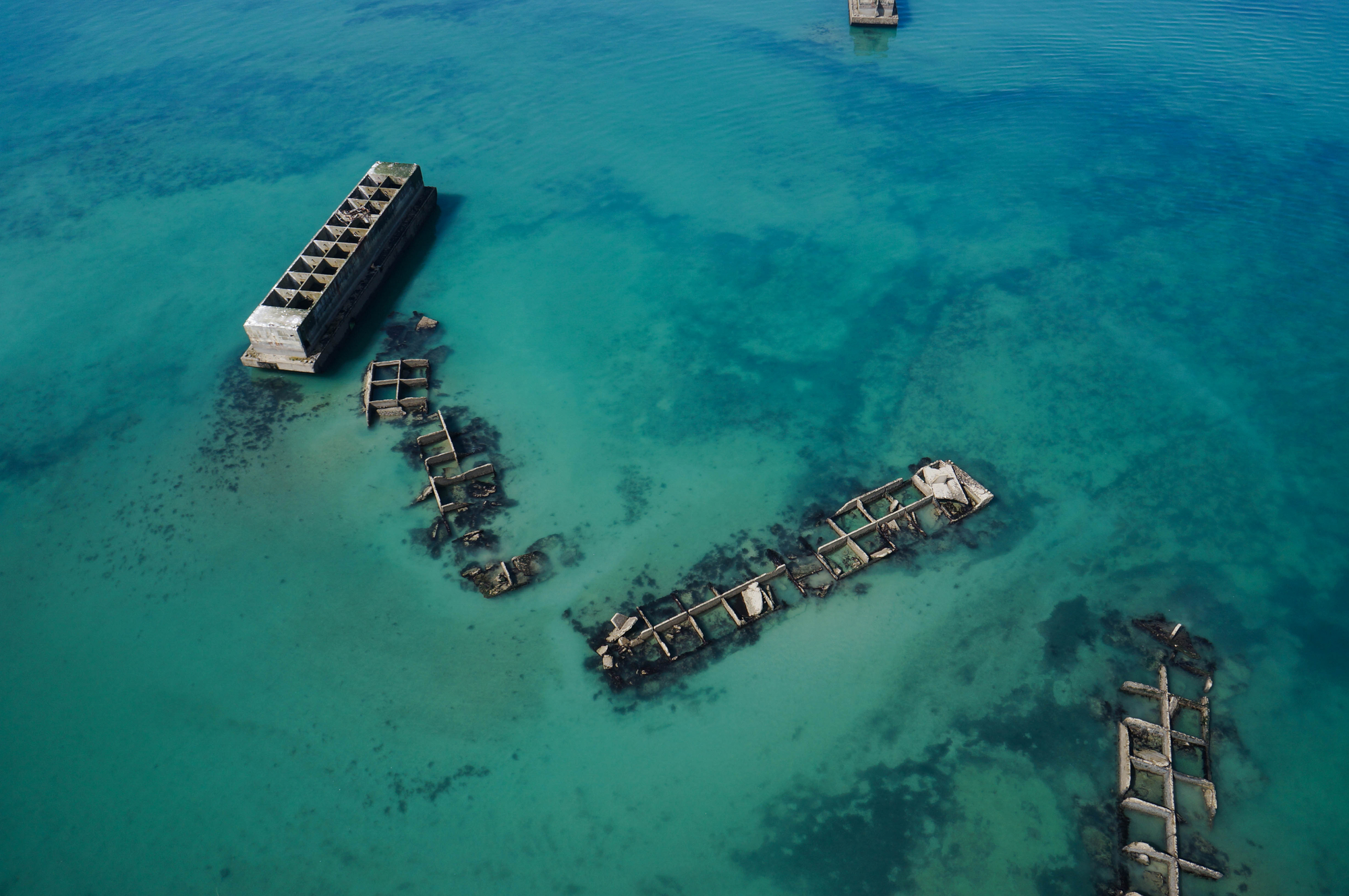
- Home
- A heritage destined to disappear
- Degradation due to multiple causes
Studies of the maritime remains of the D-Day landings are occurring at such a late stage that most sites have already significantly deteriorated. While this damage is mainly related to human activities, natural phenomena are also at play.
Traces of the conflict
Only a few of the most interesting wrecks from the D-Day landings remain relatively well preserved. Some of the sites that best illustrate Operation Neptune have been reduced to scattered debris. The minesweepers HMS Pylades, Magic and Cato, for example, were destroyed by manned torpedoes, while MMS 8 and the USS Tide, as well as the destroyers USS Meredith and Rich, were blown up by mines. Even today, the scattered remains of the Empire Broadsword or the destroyer HMS Lawford provide clear evidence of the violence of these confrontations. Many of these wrecks still contain ammunition, which may require counter-mining by the French Navy’s bomb disposal divers.
Stormy weather
Three-quarters of the Allied naval loses on D-Day were due to bad weather, not German defences. In addition, between 19 and 21 June 1944, a powerful storm damaged the breakwaters, platforms and floating roads of the artificial harbour built by the American forces off Saint-Laurent-sur-Mer, called Mulberry A (for American). This storm, which arrived a few days after the installation of the first port structures, resulted in the abandonment of Mulberry A. Mulberry B off Arromanches, whose construction was further advanced, emerged from the ordeal with repairable damage. Still today, storms, swells and currents continue to damage and degrade the underwater remains.
The effects of metallic corrosion
Almost all the wrecks from the D-Day landings are metal structures, which in the urgence of war, were sometimes constructed rapidly, from poor quality materials. Subsequently, the effects of corrosion are considerable. According to current estimates, the sheet metal on the wrecks loses an average of 0.1 mm in thickness each year. For metallic structures that are more than 75 years old, the thinner sheets are largely consumed by rust, inevitably causing the wrecks to collapse. Cathodic protection systems, which are currently being tested, could make it possible to halt this process.





